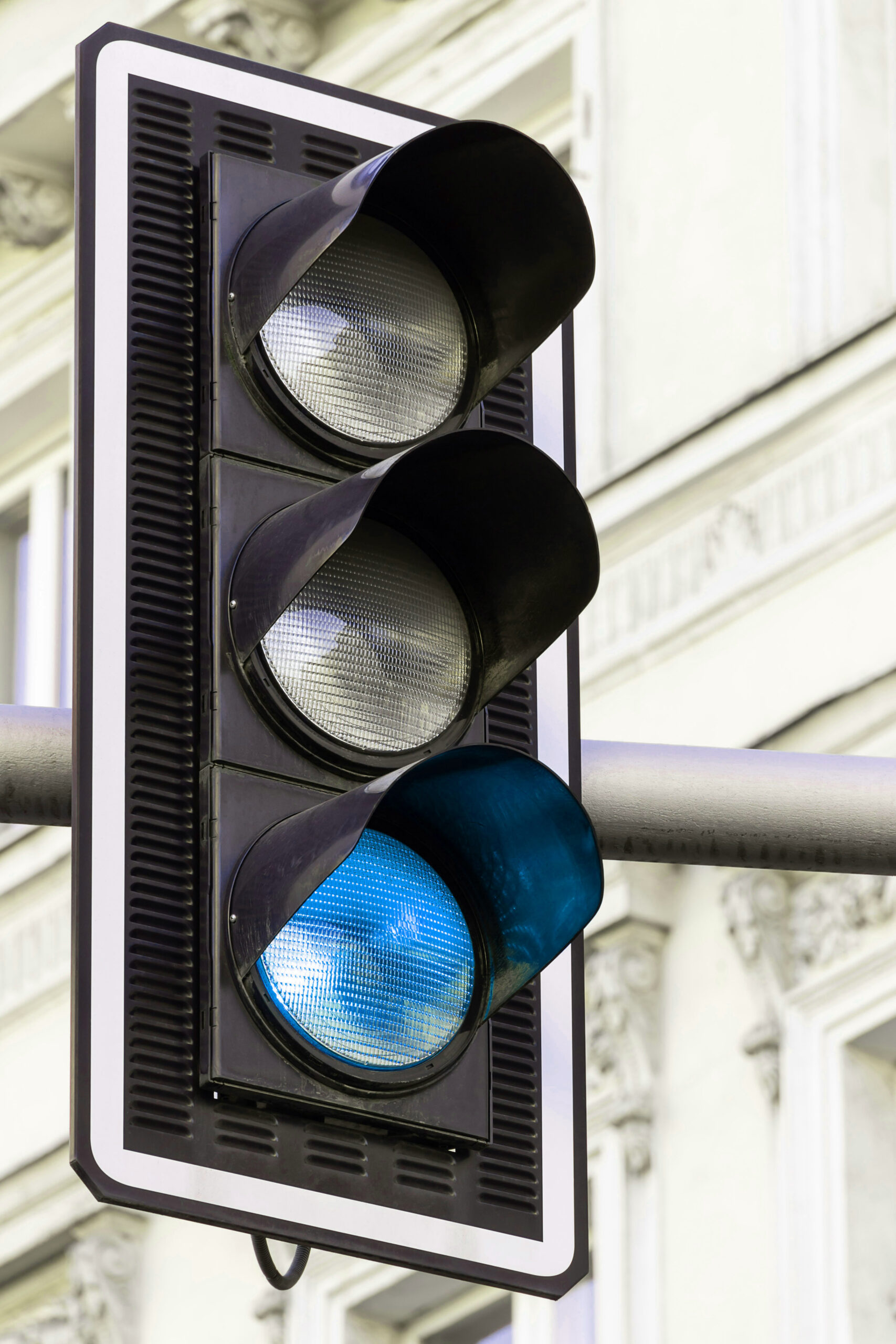In the bustling streets of Japan, amidst the harmonious blend of tradition and innovation, lies a unique feature that catches the eye of many a traveler: blue traffic signals. At first glance, this colorful deviation from the international norm of green for "go" might seem like a mere aesthetic choice. However, the story behind Japan’s blue stoplights is a fascinating tapestry of history, culture, and technology. This article delves into the enigmatic world of Japan’s traffic signals, shedding light on how they came to be, what they signify, and how they navigate the intersection of global standards and local identity.
Unraveling the Mystery of Japan’s Blue Stoplights
The peculiar sight of blue traffic lights in Japan often leaves newcomers puzzled. Unlike the universally recognized green lights indicating it’s safe to proceed, Japan opts for a bluish hue. This distinctive choice is not a recent innovation but a deep-rooted aspect of the country’s cultural and historical landscape. The reason behind this unique color choice is intertwined with the Japanese language and perception of color, providing a fascinating glimpse into how cultural factors can influence practical aspects of daily life, including traffic management.
The History Behind Japan’s Unique Traffic Signals
Japan’s blue traffic signals trace their origins back to the early 20th century. Historically, the Japanese language had a more encompassing term for green, "ao," which traditionally included shades that Western cultures might distinguish as blue. When traffic lights were first introduced in Japan, the green light was described using this term, leading to the adoption of a color that straddles the line between blue and green. Over time, this color became standardized, embedding itself in the fabric of Japan’s streetscape and becoming a symbol of the country’s unique approach to blending tradition with modernity.
Blue or Green? Decoding Japan’s Road Colors
To the international visitor, Japan’s "blue" traffic light appears as a distinct shade of pale green, a color choice that rests on the border of blue and green. This specific hue was chosen to conform to international standards while also paying homage to the country’s linguistic and cultural heritage. The decision to maintain this color balance is a testament to Japan’s dedication to its historical identity, even as it navigates the demands of globalization and adherence to international safety norms.
Cultural Insights: The Significance of Blue in Japan
The color blue holds profound cultural significance in Japan, symbolizing purity, calmness, and stability. Its prominence in Japanese art, clothing, and nature reflects a deep cultural appreciation for this color. The use of blue in traffic signals is more than a mere necessity of traffic management; it’s a reflection of the country’s aesthetic sensibilities and cultural values. This choice emphasizes harmony and continuity, blending the functional aspects of daily life with the deeper currents of Japanese tradition.
International Confusion: Japan’s Colorful Roads Explained
For travelers and international residents, Japan’s blue traffic signals are a source of fascination and, sometimes, confusion. Accustomed to the green "go" signals used worldwide, visitors often find themselves doing a double-take at intersections. This initial confusion, however, opens up a dialogue about the diversity of cultural practices and the ways in which global standards intersect with local identities. Japan’s colorful roads serve as a reminder of the rich tapestry of global cultures, inviting international visitors to explore the deeper meanings behind these everyday sights.
Technological Marvels: The Making of Japan’s Signals
The technology behind Japan’s traffic signals is as innovative as the color choice itself. These signals are designed with cutting-edge LED technology, ensuring that they are both energy-efficient and highly visible, even under the bright glare of the sun. The specific shade of blue-green used is calibrated to maximize visibility for all drivers, including those who are colorblind. This technological sophistication reflects Japan’s broader commitment to innovation and safety in public infrastructure, showcasing how tradition and modernity can coexist and complement each other.
Linguistic Perspectives: The Japanese Word for Green
In the Japanese language, the traditional word "ao" once covered a broader spectrum of colors, from dark blues to certain greens. Over time, as the language evolved and Western influences introduced a more segmented color spectrum, the word "midori" became the standard term for green. Despite these linguistic shifts, the historical use of "ao" for traffic lights remains a fascinating example of how language shapes our interpretation and interaction with the world around us. This linguistic nuance adds another layer of depth to the understanding of Japan’s blue traffic signals, connecting the present with the past.
Global Standards vs. Japan’s Colorful Rebellion
Japan’s choice to use a blue signal for "go" stands in sharp contrast to the red, amber, and green color scheme adopted by much of the world. This divergence could be seen as a form of cultural rebellion—a commitment to maintaining a unique identity in the face of global homogenization. While Japan has made efforts to align its traffic signals with international safety standards by adjusting the hue to a more recognizable green, the persistence of a bluish tint is a nod to the country’s heritage and a statement of cultural pride.
Safety and Clarity: The Impact of Blue on Drivers
The impact of Japan’s blue traffic signals on driver behavior and safety has been the subject of study and speculation. Some researchers suggest that the unique color may enhance attentiveness among drivers, possibly due to its rarity and significance within Japanese culture. Furthermore, the specific shade used is designed to be easily distinguishable, ensuring that colorblind drivers and those with other visual impairments can navigate the roads safely. This careful consideration underscores Japan’s holistic approach to traffic management, prioritizing both tradition and inclusivity.
Tourist Bewilderment: Navigating Japan’s Traffic Lights
Tourists in Japan often recount their initial surprise upon encountering the country’s blue traffic lights. This feature of the Japanese streetscape becomes a memorable aspect of their visit, symbolizing the unique blend of tradition and modernity that characterizes much of Japanese life. While it may take some getting used to, most visitors quickly adapt, finding in these distinctive signals a deeper appreciation for the nuances of Japanese culture and the importance of preserving cultural identity in a globalized world.
The Future of Traffic Signals in Japan
As Japan continues to evolve, the future of its traffic signals remains a topic of interest and debate. While there has been some pressure to conform to international norms, a strong sense of cultural identity and historical continuity suggests that the blue-green lights are here to stay. Innovations in technology and design may further enhance the efficiency and safety of these signals, but the underlying commitment to tradition is likely to remain a guiding principle. As Japan looks forward, it does so with an eye on its past, ensuring that even the most commonplace elements of daily life reflect the country’s rich cultural heritage.
Shifting Shades: Will Japan’s Signals Turn Green?
The question of whether Japan’s traffic signals will ever shift to the green used by the rest of the world is one of both practical concern and cultural significance. While incremental changes have been made to align more closely with the green hue recognized internationally, a complete transition seems unlikely. The blue-green traffic lights of Japan have become more than a functional necessity; they are a symbol of the country’s uniqueness and a point of national pride. In the balance between global integration and cultural identity, Japan’s traffic signals stand as a vibrant example of how societies can navigate the complexities of the modern world while honoring their historical roots.
Japan’s blue traffic signals are more than a curiosity to visitors; they are a window into the soul of a nation that values harmony, innovation, and tradition. These unique signals illuminate the crossroads of history, culture, and technology, offering a colorful reminder of Japan’s distinct path in the global landscape. As Japan continues to weave its past into the fabric of its future, its blue-green lights will likely remain a beacon of cultural pride, guiding both residents and visitors through the bustling streets with a blend of safety, clarity, and beauty. In exploring the story behind these signals, we gain a deeper appreciation for the intricate ways in which cultural values can shape the most practical aspects of our lives, casting the familiar in a new light.



